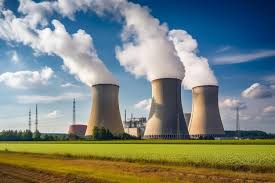Introduction
Energy harvesting in cooling towers refers to the innovative use of waste heat, typically lost during cooling processes, to generate power. Cooling towers, integral to many industrial applications, dissipate large amounts of thermal energy as part of their normal operation. By harnessing this otherwise wasted energy, industries can reduce overall energy consumption, lower costs, and contribute to sustainability efforts.
Waste Heat Potential: Cooling towers release substantial amounts of low-grade waste heat. This heat, though not traditionally utilized, can be captured and converted into useful energy through technologies like thermoelectric generators (TEGs) or organic Rankine cycle (ORC) systems, which are designed to operate efficiently with lower temperature differentials.
Thermoelectric Generators (TEGs): TEGs are devices that convert temperature differences into electrical energy using the Seebeck effect. By installing TEGs in the cooling tower exhaust or at heat exchange points, the waste heat can generate electricity that powers local systems or can be fed back into the grid.
Organic Rankine Cycle (ORC) Systems: ORC systems utilize organic fluids with low boiling points to convert waste heat into mechanical energy, which can then be used to drive an electric generator. This is particularly effective in cooling towers, where the available heat can easily drive these low-temperature cycles.
Efficiency Gains: By capturing and repurposing waste heat, industries can improve their energy efficiency. This reduces reliance on external power sources and helps cut down on greenhouse gas emissions, aligning with global sustainability goals.
Integration with Renewable Energy Systems: Energy harvesting systems in cooling towers can complement renewable energy sources, such as solar or wind, by providing continuous, low-cost power. This makes cooling towers an even more integral part of a facility’s energy management strategy, particularly in microgrids or smart grids.
Economic and Environmental Benefits: Implementing energy-harvesting technologies can lead to significant cost savings over time by reducing the need for purchased electricity. Additionally, the reduction in waste heat emissions and energy consumption contributes to a lower carbon footprint, enhancing a company’s environmental credentials.
District Heating and Cooling:Captured waste heat from cooling towers can be redirected to district heating networks. Instead of being lost, the thermal energy can heat buildings or water in nearby urban areas, providing a sustainable source of energy for cities and industrial complexes.
Hybrid Cooling and Power Systems:Integrating waste heat recovery systems into cooling towers creates hybrid setups where cooling and energy production occur simultaneously. This synergy can reduce the need for additional infrastructure and increase overall system performance and energy density.
Advanced Heat Exchangers:The implementation of advanced heat exchanger technology can improve the efficiency of waste heat recovery in cooling towers. Compact, high-efficiency heat exchangers, such as microchannel heat exchangers, can help capture and transfer waste heat with minimal energy loss.
Improved Power Plant Efficiency:For thermal power plants that use cooling towers, waste heat recovery can significantly improve overall energy conversion efficiency. By capturing the heat that is normally released into the atmosphere, these power plants can generate additional electricity, improving fuel efficiency and reducing waste.
Energy Storage Integration:Energy harvested from cooling towers can be stored in thermal energy storage systems or converted to electricity for use during peak demand periods. This helps balance power loads and reduce reliance on external energy sources, especially during high-demand times.
Geothermal Hybridization:In areas with geothermal resources, cooling towers can be paired with geothermal systems. The waste heat can be further utilized in conjunction with geothermal energy to create hybrid energy systems that boost both cooling and power generation capacity.
Enhanced Sustainability Metrics:By capturing waste heat, companies can significantly improve their sustainability metrics, such as energy intensity and carbon emissions per unit of production. This is particularly important for industries looking to meet stricter environmental regulations and promote corporate responsibility.
Government Incentives and Regulations:In many regions, governments offer incentives or tax benefits for companies that implement energy-saving or waste heat recovery technologies. Cooling towers with energy-harvesting capabilities may qualify for these programs, leading to cost reductions in both energy and operational expenses.
Reduced Cooling Water Demand:By repurposing waste heat, cooling towers may require less water for cooling, reducing overall water consumption. This is particularly beneficial in regions facing water scarcity, where industries are pressured to minimize water use in cooling processes.
Modular and Scalable Solutions:Energy-harvesting technologies can be modular and scalable, allowing industries to start with small installations and gradually increase their capacity. This flexibility enables companies to adopt waste heat recovery solutions without requiring significant upfront investments.
Conclusion
energy harvesting in cooling towers presents a transformative opportunity for industries to capture and utilize waste heat that would otherwise be lost. By integrating advanced technologies like waste heat recovery systems, industries can significantly boost energy efficiency, reduce operational costs, and contribute to sustainable practices. This not only improves the overall efficiency of cooling operations but also opens the door to generating additional power, reducing carbon footprints, and enhancing sustainability metrics. As industries face increasing pressure to minimize environmental impact, the adoption of energy-harvesting systems in cooling towers offers a practical and forward-thinking solution for a greener future.

